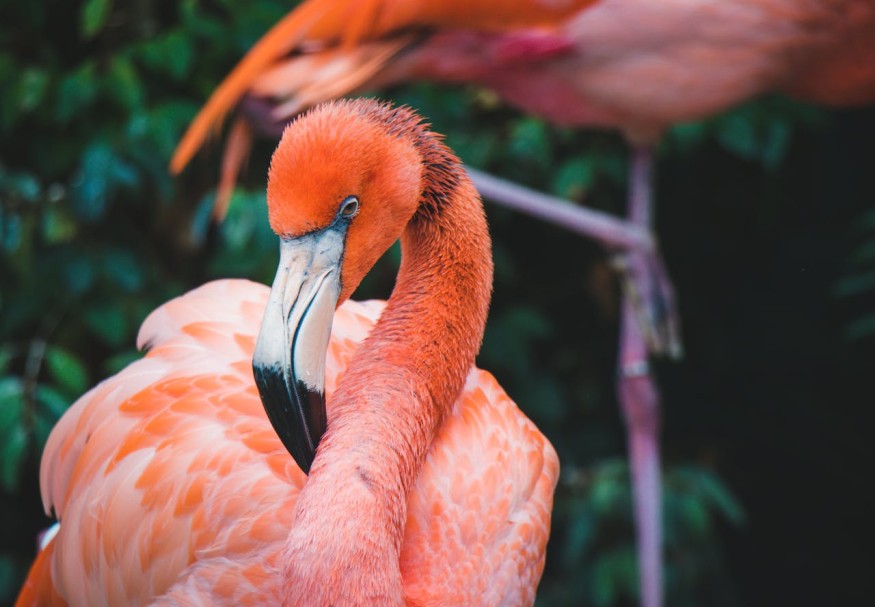According to a new study, rising lake levels are threatening iconic flamingos in Africa, making them in danger of being flushed out of their feeding grounds.

Africa's Iconic Flamingos Are in Danger
A study that was led by the King's College London has discovered that the lesser flamingo are at risk of being flushed out from their historic feeding grounds. This could lead to grave consequences for the species' future.
Aidan Byrne, the study's lead author and a PhD student supervised jointly by the Natural History Museum and King's College London, explains that lesser flamingos within East Africa are getting increasingly vulnerable. This is particularly the case with increased rainfall predicted for the area due to climate change.
ALSO READ : Pinkest Flamingos Most Aggressive in Squabbling
Read also: for Food
Main Food Source Threatened Due to Rising Lake Levels
For the first time, data from satellite Earth observations were used to examine key flamingos that feed in lakes across Tanzania, Kenya, and Ethiopia for two decades. It was able to identify that the main food source of the birds was being reduced by rising lake levels.
With this, the scientists warn that the pink birds may be pushed into areas that are new and unprotected as they keep searching for food. This may especially be the case given the higher rainfall levels that are predicted and associated with climate change.
The researchers now call for coordinated conservation action throughout global borders, enhanced monitoring, and more sustainable management of the land that surrounds crucial flamingo lakes.
Byrne notes that the region houses over three-fourths of the lesser flamingo global population. However, their numbers are getting smaller. If there are no improvements in lake monitoring and catchment management, the specialized species could eventually be lost.
The study, entitled "Productivity declines threaten East African soda lakes and the iconic Lesser Flamingo," is the first one that makes use of satellite Earth observation data for examining all of the 22 key flamingo feeding soda lakes across East Africa. The analysis was mixed with bird observation data and climate records from over twenty years.
By looking into such a massive scale, the scientists were able to observe altering food availability across the whole lake network. This includes great declines in recent years and how the number of birds decreased with the increase of lake surface area. The researchers also identified the lakes that birds could move into in the future.
Feeding and Breeding Areas Threatened
According to Dr. Emma Tebbs, a co-author of the study from KCL, explains that though it is natural for flamingos to travel as they search for food, the degradation of their historic breeding and feeding areas was a grave matter. Populations in East Africa may move either north or south from the equator as they look for resources. Among the six lakes that had higher suitability for habitation from 2010 to 2022, only one had conservation protection to a certain extent. Higher water levels may also push these flamingos to rely more on unprotected lakes beyond current protected sites and nature reserves.
Soda lakes are some of the Earth's harshest environments, as they are extremely alkaline and saline. However, several species have been able to thrive and evolve in such environmental conditions.
The study discovered that rising waters in the soda lakes of the region were diluting their typically alkaline and salty nature. This could lead to a phytoplankton population decline, which is gauged by the amount of chlorophyll-a, a photosynthetic pigment, that is present within the waters.
The researchers discovered that over the 23 years of study, levels of phytoplankton were declining. They also linked such a trend to the increased lake surface area in the same span. The largest phytoplankton biomass losses were observed in Elementaita, Bogoria, and Nakuru, which is one of East Africa's most important feeding lakes for flamingos.
Tanzania's Natron, the only lesser flamingo breeding site in East Asia, has also been seeing a productivity decline alongside increasing water levels. If the biomass of phytoplankton keeps on declining here and on feeding lakes nearby, the area will no longer be a breeding site that is suitable.
Check out more news and information on Animals in Science Times.










